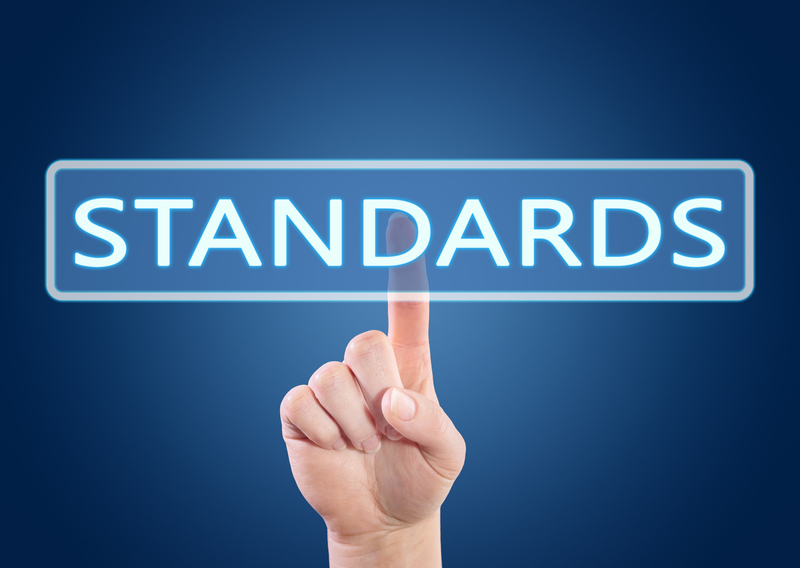
Using Product Test Standards to Develop a Test and Evaluation Program
There is a seemingly endless amount of product test standards and specifications. These documents set criteria for compliance, provide guidance for evaluation, and sometimes assist in the development of analysis and test programs of both consumer products and military products. They are all constantly evolving as new revisions are released periodically.
Some product test standards offer very clear and concise parameters for product evaluation. Other test standards can be vague in the details of their requirements. The quality of writing and organization can also greatly vary. Many have annexes and appendices full of extremely in depth information that can clarify a test’s methodologies and intents.
Military Test Standards
MIL-STD-810
MIL-STD-810 – Environmental Engineering Considerations and Laboratory Tests is a prominent standard for the evaluation of climatic and dynamic stresses that occur in the expected life cycle of a defense product. It is a vast standard comprised of 29 test methodologies and numerous appendixes and addendums.
Utilizing this standard fully involves understanding how to tailor testing to adequately reflect expected environmental stresses. The determination of these stresses is accomplished through a Life Cycle Environmental Profile (LCEP). These stresses and their severities serve as inputs to the Environmental Issues/Criteria List (EICL) which in turn provide a baseline for design and aid in the selection of relevant test procedure parameters.
MIL-STD-461
MIL-STD-461 is an EMI/EMC standard for developmental test and evaluation. This standard is broken out into nineteen various methods. These methods include Radiated Emissions, Conducted Emissions, Radiated Susceptibility, and Conducted Susceptibility.
MIL-STD-461 testing includes radiated and conducted test methods. These methods involve simulations of magnetic, radio frequency, Electrostatic Discharge (ESD), and Electromagnetic Pulse (EMP) sources of potential disturbance. Susceptibility requirements are determined by type of equipment, type of platform the equipment is to be operational on, and location of the equipment on that platform.
MIL-STD-1275
MIL-STD-1275, Characteristics of 28 Volt DC Input Power to Utilization Equipment in Military Vehicles, specifies test methodologies that simulate the nominal 28 VDC voltage characteristics in military ground vehicles power distribution networks. General Requirements for Equipment Under Test (EUT) include; Operational Voltage Ranges, Transient Waveforms, Ripples, Spikes, Surges, and Starting Disturbances.
MIL-STD-704
This standard is used to evaluate a product’s ability to operate as specified when powered in an aircraft power distribution network. MIL-HDBK-704-1 thru -8 define the test methods and procedures. These each of these documents cover a specific power type such as; AC 60 Hz, AC variable frequency, AC 400Hz, as well as tests for DC power equipment.
MIL-STD-1399 Parts 1 and 2
As with equipment designed for use in aircraft and land vehicle, there are electrical compatibility requirements for shipboard equipment. This standard provides test methodologies to ensure that these products meet requirements for operating in extremely noisy electrical power networks.
Commercial Test Standards
There are a wide variety of test standards for commercial product evaluation. These standards ensure that regulated products meet industry accepted levels of performance capability and product safety. Selection of the appropriate standards requires that you understand the requirements of the market sector and the regulatory requirements of the nations in which the product is to be sold.
IEC 60529
IEC 60529 is a standard used in a variety of industries. This standard provides means of evaluating a product’s ingress protection. Product ratings are defined an IP code. This code classifies the degrees of protection provided against the intrusion of solid objects (including body parts like hands and fingers), dust, accidental contact, and water in electrical enclosures.
Using Product Test Standards to Develop a Test and Evaluation Program
Each product test standard should be treated by the reader as unique as to its perspective and purpose. MIL-STD-810H for example places a huge emphasis on tailoring parameters of test methods to reflect the environmental stresses the product to be tested will encounter throughout its life cycle. This perspective is not as applicable to standards for compliance where strict parameters and procedures are required.This can present a challenge to managers of test programs,especially those who are working with a product that is being released to new markets.
Allocating the time and resources to grasp the entirety of required test procedures can be daunting. Test laboratories can provide guidance but it is beyond their scope to advocate management strategies to best establish programs fit for your product. Test laboratories cannot give recommendations on product test standards and still remain an independent evaluating body.
CVG Strategy Experts
CVG Strategy has experience in developmental test and evaluation for a wide variety of industries including military and automotive. Because of this we understand looking beyond a test to pass perspective. We can help develop a test program that will return meaningful data and verify a products ability to survive harsh environments.
We also have extensive experience in environmental, EMI/EMC, and electrical compatibility testing for both military and commercial products. CVG Strategy specializes in Independent Developmental Testing and Evaluation including development of Test Plans, providing Test Witnessing, and Analysis. We also provide MIL-STD-810 Training Seminars and Webinars to enable product developers to create tailored test programs.
CVG Strategy is a consultancy offering coaching, mentoring, training and program development focused on areas including Business Process Improvement, ITAR and Export Compliance, Cyber Security and Quality Management Systems.


